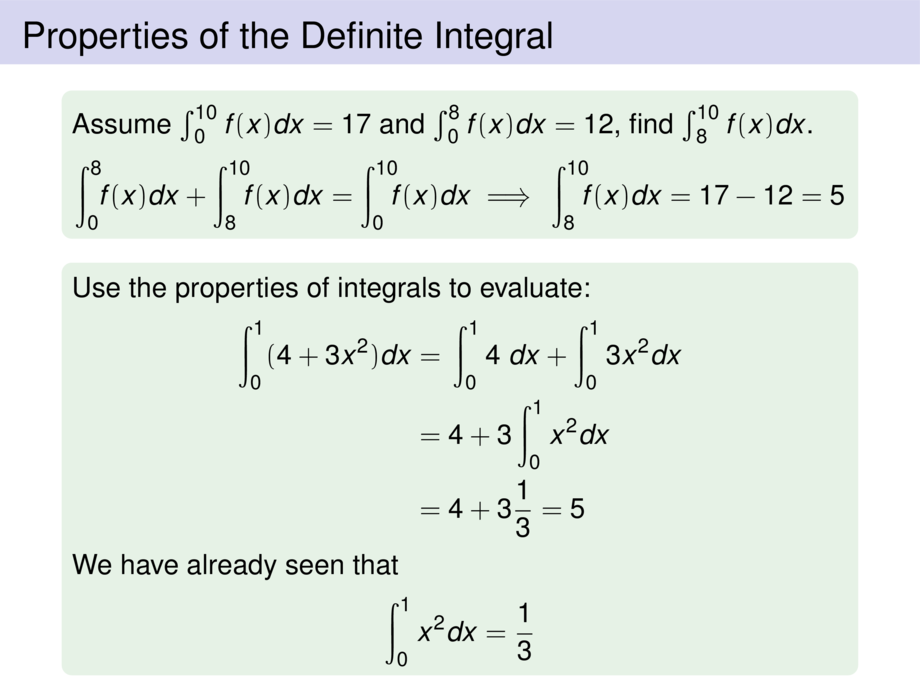



































































































100/111
\begin{frame}
\frametitle{Properties of the Definite Integral}
\begin{exampleblock}{}
Assume $\int_0^{10} f(x) dx = 17$ and $\int_0^{8} f(x) dx = 12$, find
$\int_8^{10} f(x) dx$.
\pause
\begin{talign}
\int_0^{8} \!\!f(x) dx + \int_8^{10} \!\!\!f(x) dx = \int_0^{10} \!\!\!f(x) dx
\implies \mpause[1]{\int_8^{10} \!\!\!f(x) dx = 17-12=5}
\end{talign}
\end{exampleblock}
\pause\pause
\begin{exampleblock}{}
Use the properties of integrals to evaluate:
\begin{talign}
\int_0^1 (4+3x^2)dx &= \mpause[1]{ \int_0^1 4\;dx + \int_0^1 3x^2 dx} \\
\mpause{&= 4 + 3\int_0^1 x^2 dx}
\mpause{}\\
\mpause{& = 4 + 3\frac{1}{3} = 5}
\end{talign}
\pause\pause\pause
We have already seen that
\begin{talign}
\int_0^1 x^2dx = \frac{1}{3}
\end{talign}
\end{exampleblock}
\end{frame}

